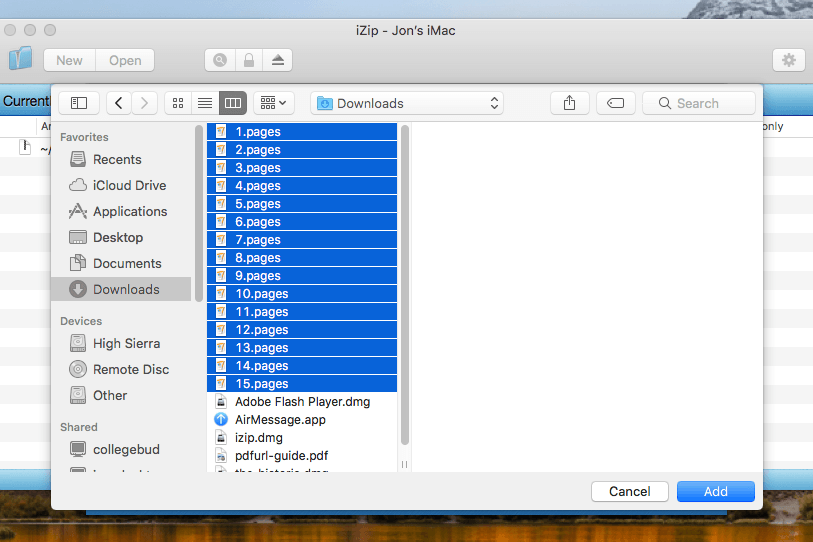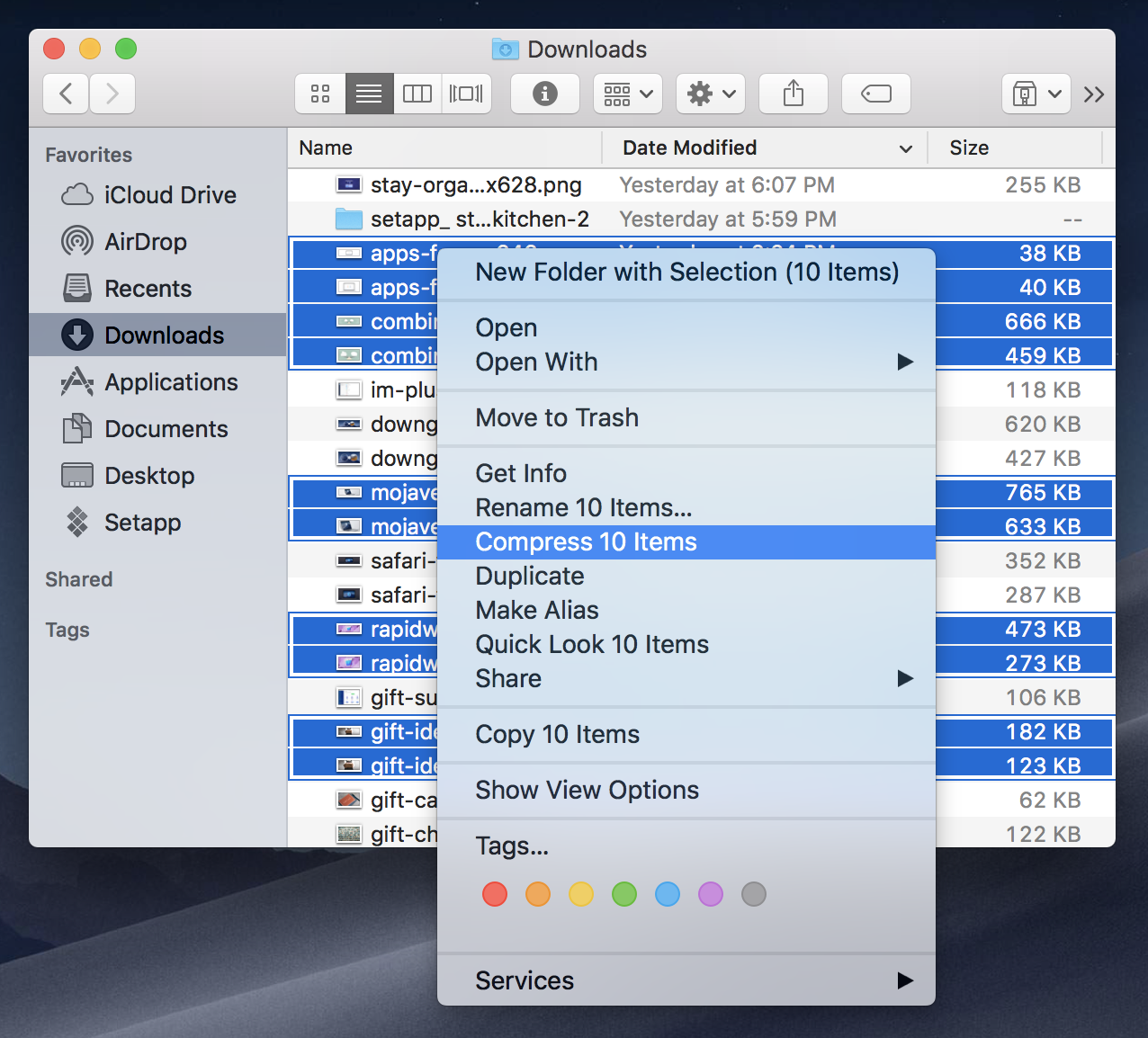

Just double click on the file like you're going to open it in something. Now to decompress it's even easier than that. I can select a whole arrangement of different things and compress them all into one archive. I can even select multiple folders and then it will compress both those items. I can Control click it and Compress and I get the entire folder compressed. Then I get both of those saved to a single file.

I can quickly hit the Return key and rename it whatever I want. Then you get something named Archive.zip. Then Control click either one of those and it will say Compress 2 items or however many items there are selected.

Now if I want to do that with multiple files I can select one file and then I'll select another one holding down the Command key for a multiple selection. If I select that I will get the same file there but with dot zip after it.

So look for the option Compress and the name of the file. All I need to do is use the Context menu which I can get to with a two finger click on my trackpad or by Control clicking on a file and then I get the option to Compress.
#What is the zip archive app for mac zip file
Just as easily you can decompress any zip file that you receive by email or download. This is also known as zipping the files because the zip format is mostly used for compression. So it's very easy to compress a file, group of files, or even folders using a simple command in the Finder on your Mac. Join us and get exclusive content at /patreon. MacMost is brought to you thanks to an incredible group of supporters. Let me show you how you can compress and decompress files on your Mac. Video Transcript: Hi, this is Gary with.
#What is the zip archive app for mac how to
Both Archive Utility and the zip command line utility discard ACLs.Check out How To Zip and Unzip Files On Your Mac at YouTube for closed captioning and more options. xattr also includes resource forks and file flags, because even though they are not actually stored as extended attributes, they can be accessed through the extended attributes interface. Normally you can just discard the OS X-specific metadata, but to see what metadata files contain, you can use xattr -l. The zip command line utility discards metadata such as extended attributes, file flags, and resource forks, which also means that metadata such as tags is lost, and that aliases stop working, because the information in an alias file is stored in a resource fork. _ that are used to store OS X-specific metadata. The _MACOSX directory contains AppleDouble files whose filename starts with. The top level file of a zip archive with multiple files should usually be a single directory, because if it is not, some unarchiving utilites (like unzip and 7z, but not Archive Utility, The Unarchiver, unar, or dtrx) do not create a containing directory for the files when the archive is extracted, which often makes the files difficult to find, and if multiple archives like that are extracted at the same time, it can be difficult to tell which files belong to which archive.Īrchive Utility only creates a _MACOSX directory when you create an archive where at least one file contains metadata such as extended attributes, file flags, or a resource fork. DS_Store files inside directories but -x \*.DS_Store does. $ unzip -l a\ 2.zip # I created `a 2.zip` from Finder before this In the output below, a.zip which I created with the zip command line utility does not contain a _MACOSX directory, but a 2.zip which I created from Finder does. The zip command line utility never creates a _MACOSX directory, so you can just run a command like this: zip directory.zip -x \*.DS_Store -r directory


 0 kommentar(er)
0 kommentar(er)
